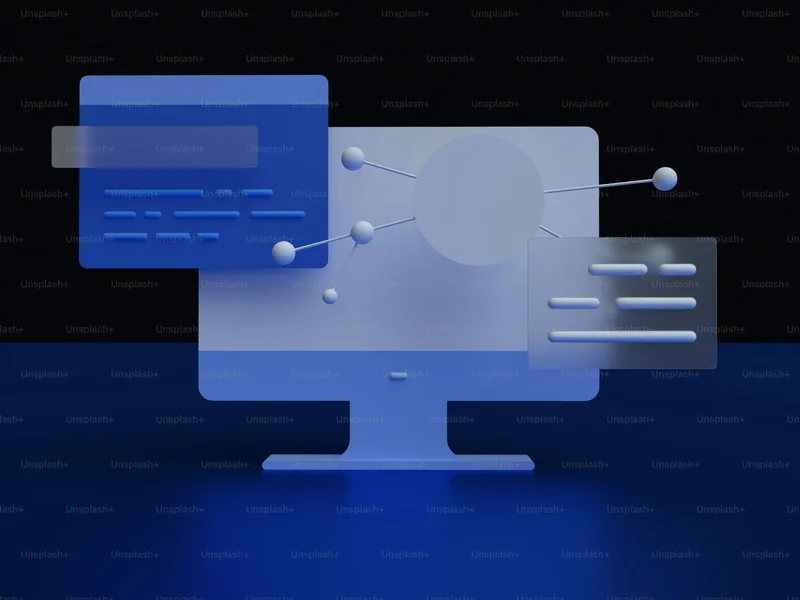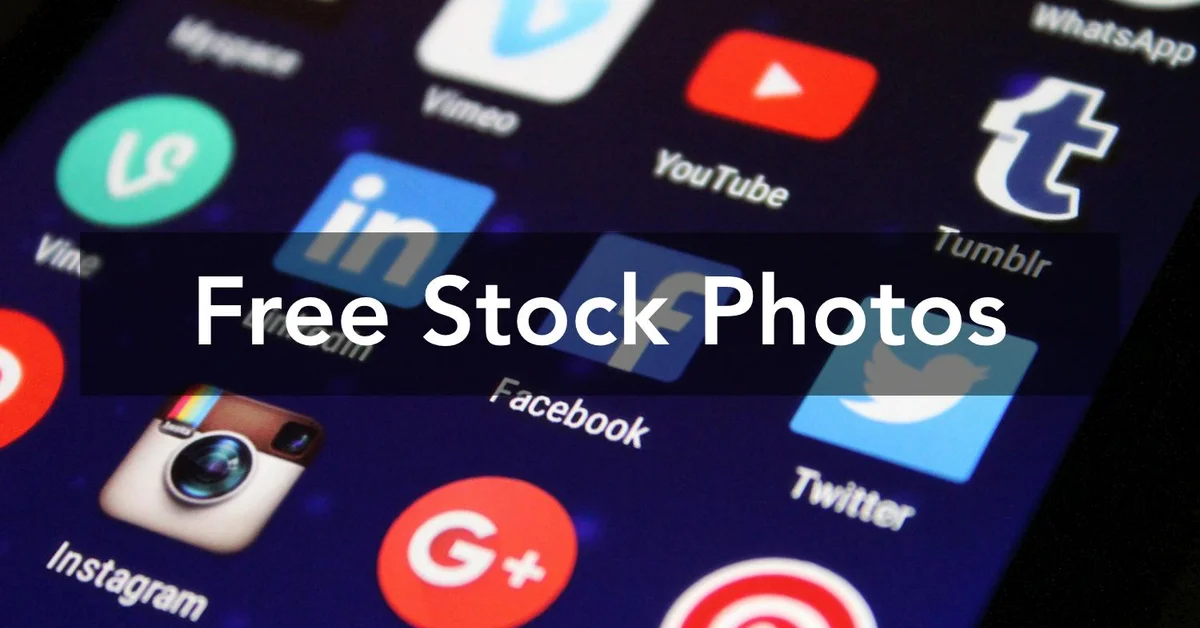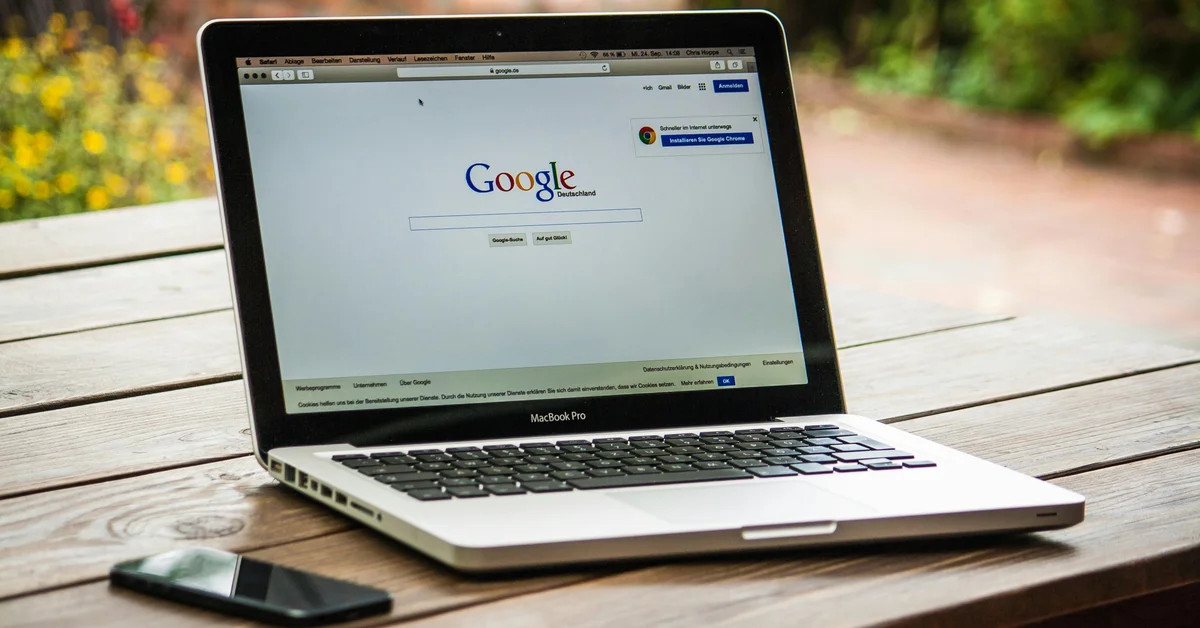Top 7 LinkedIn Hacks for SEO Marketers

Using LinkedIn can boost your visibility and network.. It has over 900 million users. It’s a great place to share your work and connect with others. But just having a profile isn’t enough; you need to make the most of it. This article dives into ways to enhance your LinkedIn presence and become a leader in your field.
Making the most of LinkedIn means knowing how to use its features to stand out and engage with others. Craft a profile with the right keywords to showcase your skills. Share valuable content regularly. These steps can shape how others see you, whether they are peers, bosses, or clients. Join industry talks, use analytics, and connect with influencers to grow professionally.
Read on to find tips that will boost your LinkedIn presence and help you become a strong voice in your industry.
Table of Contents
- Optimize Your Profile for Keywords
- Use LinkedIn Articles for Thought Leadership
- Engage with LinkedIn Groups Relevant to Your Niche
- Use LinkedIn Analytics to Track Engagement
- Build a Strong Network with Industry Influencers
- Use LinkedIn Ads for Targeted Outreach
- Regularly Share Valuable Content to Boost Visibility
Optimize Your Profile for Keywords
If you want your LinkedIn profile to shine, make it work for you. A great way to do that is by using keywords that fit your industry. This not only gets you noticed in searches but also draws the right connections and opportunities your way. Let’s dive into some areas that can help your profile stand out.
Start with your headline. It’s one of the first things people notice. Use keywords that match your field. Don’t just put your job title. Think about what your audience might type when looking for someone like you. If you’re a digital marketer, for instance, you could write, “Digital Marketing Specialist, SEO Enthusiast, and Content Strategy Expert.” This shows your role and also highlights key skills and interests.
Next up, your summary. Here’s your chance to share your professional story with those important keywords. Write a summary that talks about your experience and what sets you apart. Use industry terms your audience relates to. A good summary might look like this:
- Kick off with who you are.
- Talk about your main skills and experiences.
- Share big achievements or projects.
- Wrap up with what you’re seeking now, like new connections or job opportunities.
Keep your audience in mind. Write like you’re chatting with them. Make it engaging and friendly, and sprinkle in those keywords naturally.
Don’t forget your experience section. When describing past jobs, add relevant keywords that show what you did. Use bullet points to keep it clear. Examples include:
- Developed content strategies that increased website traffic by 30%.
- Managed social media campaigns focusing on audience engagement.
- Conducted keyword research to enhance SEO performance.
- Collaborated with cross-functional teams to launch successful products.
Each point isn’t just about what you did, but it also builds on your expertise in those areas.
The skills section is your chance to directly highlight what you’re good at. Add industry-specific skills that people might search for. Think about your technical skills, soft skills, and tools you know well. Highlight the top skills that match your career goals.
Finally, update your profile picture and cover photo. Don’t skip these visuals. Go for a professional headshot and a cover photo that reflects your brand. Whether it’s an office scene, your team, or something from your industry, it should help tell your story quickly.
Optimizing your LinkedIn profile isn’t just about stuffing in keywords. It’s about crafting a story that aligns with your goals and speaks to your audience. By making your profile better, you’re giving yourself a chance to connect with peers and potential collaborators. It’s never too late to tweak these aspects and see the impact on your career path.
Use LinkedIn Articles for Thought Leadership
Writing LinkedIn articles can boost your profile and make you known as an expert in your field. It’s more than just sharing a headline. It’s about crafting content that clicks with your audience and sparks interaction. Done right, these articles link you to your network and attract new followers.
Pick topics your audience cares about. Tackle their issues, goals, or questions. What keeps them up at night? Do they need tips on industry trends? Are they looking to boost their skills? Your experiences and insights can really help.
Here are a few topic ideas:
- The future of your industry
- Overcoming challenges in your field
- Tips for professional growth that have worked for you
- Case studies of successful projects
Once you pick a topic, outline your thoughts. A clear structure guides your readers through your perspective. Start with a hook to grab their attention. Maybe a story or strong stat that backs up your point. Then, dive into key points with examples. This informs and helps those looking for real solutions.
Consider your writing style. Keep it casual. Use a tone that’s friendly and relatable. Write like you’re chatting with a friend over coffee. Skip the overly formal tone. Your audience will value your genuineness.
Including visuals improves your articles. Images, infographics, or videos can break up the text and grab attention. People learn in different ways, and a good visual can create a stronger bond.
Once your article goes live, you’re not done. Promote it. Share it on your profile and in relevant groups. Spark discussions by asking questions related to your article. Get their opinions or invite them to share experiences. This not only boosts your reach but also deepens the conversation.
Watch how people engage. LinkedIn analytics show how your articles do. Check views, likes, comments, and shares. Knowing what hits the mark with your audience helps you plan future content. If some topics catch fire, explore them more next time.
Remember, building your reputation takes time. Consistency is key. Don’t write just one article and wait for results. Keep posting regularly. Set a schedule that fits your routine and stick with it. People will start looking forward to your insights, and your professional network will grow.
Writing LinkedIn articles is a rewarding way to share your knowledge and make meaningful connections. Enjoy the process, listen to your audience, and appreciate the journey. Your voice is unique. Let it shine through your articles, and you’ll forge valuable links in your professional circle.
Engage with LinkedIn Groups Relevant to Your Niche
Getting involved with LinkedIn Groups can really boost your SEO marketing game. These communities let you connect with similar professionals and open doors to show off what you know. By joining in on the right conversations, you can make a name for yourself in your field, which can help raise your visibility and trustworthiness.
Picking the right groups matters. Start by looking for ones tied to your niche. Find those with lots of active discussions and members. You want a place where people talk and your thoughts will count. Here’s how you can do it:
-
Use the LinkedIn search bar to find groups with keywords from your industry.
-
Check how many members are there and how active they are—big groups can broaden your reach, but smaller, niche groups give room for deeper chats.
-
Look at group rules. Some need approval for posts, while others are cool with open chats.
Once you find those groups, dive in. Don’t just scroll through posts. Add your thoughts and insights. Answer people’s questions. By contributing useful comments or sharing good resources, you start building connections. This can lead to meeting new people and finding fresh opportunities.
Make a habit of spending a few minutes each day reading posts, leaving comments, and sharing content. Keeping up regularly helps you stay top-of-mind in the group.
Sharing your content is great when it fits naturally into a conversation. If there’s a topic someone is discussing that you’ve written about, share your link and add more thoughts. But don’t overdo it. Be a part of the conversation first, rather than pushing your stuff constantly.
Here are some ways to engage well in LinkedIn Groups:
-
Ask Questions: Start up discussions by asking questions that spark responses. This shows you’re interested in others’ opinions.
-
Share Stuff: Post articles or infographics that group members will find helpful. Make sure it’s cool with the group rules.
-
Help Out: If someone’s having a problem you can help with, jump in. Helping builds goodwill and solidifies your role as an expert.
-
Celebrate Wins: When someone shares a success, like a new job, celebrate with them. This builds community spirit and keeps conversations alive.
-
Network Privately: When you click with someone over shared interests, send them a quick note. A simple “I liked what you said about [topic] in [group]” works wonders.
Remember, aim to be seen and be useful. Building relationships takes time, but it’s worth it. Active participation in groups can lead to meeting new people, finding opportunities, and even landing clients.
By sharing what you know and helping others, you grow your professional circle and boost your brand on LinkedIn. Your active engagement here can shine a positive light on your SEO marketing and help advance your career.

Use LinkedIn Analytics to Track Engagement
LinkedIn Analytics can really boost your SEO marketing. A lot of people ignore it, focusing on likes and shares instead. But engagement shows how well your content connects with your audience.
Jump into your LinkedIn dashboard. It’s packed with insights about your posts and profile. You’ll see how your content performs and what your audience cares about.
Keep an eye on these metrics:
-
Profile Views: How many people are visiting your profile? More views often mean your content is catching attention.
-
Connections Growth: Are you gaining new connections after posting? If yes, your outreach is working.
-
Post Impressions: This is how many times people see your post, even if they don’t engage. A big number might mean your insights are valuable but could use a clear call to action.
-
Engagement Rate: This includes likes, comments, and shares. A high rate means your content resonates with your audience.
Once you understand these metrics, tweak your strategy. For example, if a post style gets more engagement, make more like it.
Check when your posts get the most views. This can help you post at times when your audience is online. Trying different times can increase your reach and interaction.
Look at your audience demographics to fine-tune your content. LinkedIn Analytics shows you who interacts with your posts. Use this info to create content that speaks to them.
Try these steps to boost your LinkedIn engagement:
-
Identify your audience: Use data to find out who they are, their industries, or job titles.
-
Adapt your content: If one group likes your insights, focus on topics they care about.
-
Test different formats: Experiment with videos, articles, or status updates to find what they like.
-
Set goals: Based on the analytics, set SMART goals (specific, measurable, attainable, relevant, time-bound) to track your progress.
Remember, engagement is about building a relationship. Keep interacting by responding to comments.
LinkedIn Analytics helps you decide which strategies to stick with and which to change. Adjusting based on analytics keeps your content lively and your audience engaged. Tailor your content to meet their needs, and you’ll not only boost your SEO but also grow your network.
Build a Strong Network with Industry Influencers
Building a strong network with industry influencers can really boost your LinkedIn game. These folks can extend your reach, lend credibility, and power up your SEO marketing. But it’s more than just sending a connection request. It’s about forming real relationships that can lead to great collaboration and insights.
Find influencers in your field. Look for people who engage genuinely with their audience, not just popular ones. Use LinkedIn’s search with industry keywords to find them. Don’t just go by follower count; check out their content and engagement. Do their posts line up with your goals? Are they active regularly? These clues tell you about their impact.
Once you’ve got a list of potential influencers, dive into their content. Like their posts, add your thoughts in the comments, join discussions. This lets you get noticed without being pushy. Share your angle and offer real value. People like when someone thoughtfully contributes rather than self-promotes.
Another smart move is to create content that tags or mentions these influencers. It could be a blog or a LinkedIn article. Highlight their work, reference their insights, or talk about ideas they’ve shared. You’ll grab their and their followers’ attention. It’s a win-win—you show your expertise and appreciate their work.
Think about contacting them directly with a personal message. Tell them why you admire their work and suggest collaboration ideas. Keep it brief and real. If you’re working on a project that fits their expertise, mention it. Don’t just focus on what you need; show how working together can be good for both sides.
Quality beats quantity in building a network. Focus on nurturing these connections. Regularly engage with their posts, celebrate their wins, and support their efforts. This could lead to deeper relationships and new professional chances. It might even bring influential recommendations if you show dedication and know-how.
Here are some key strategies:
- Identify Relevant Influencers: Search LinkedIn for industry leaders.
- Engage Authentically: Comment on posts and share insights.
- Create Content: Mention influencers in what you create.
- Reach Out Personally: Send a genuine, personal message.
- Nurture Relationships: Keep up regular interactions and support.
Networking with influencers doesn’t have to be daunting. Start small. Not every connection is a big deal; it’s often about finding common ground and building trust over time. With patience and being real, you can build a network of influencers who’ll boost your LinkedIn presence and your marketing strategy. Be proactive, stay engaged, and grow your professional network.

Use LinkedIn Ads for Targeted Outreach
LinkedIn Ads can really boost your outreach. If you’re stuck on organic methods, trying out LinkedIn’s paid options could be the right move. Using its tools lets you target your audience better and enhances your marketing touch. Here’s how to use LinkedIn Ads effectively.
Know your audience. You can’t aim if you don’t know where you’re aiming. LinkedIn offers strong targeting features. Narrow down your audience by:
- Job title
- Industry
- Company size
- Location
- Skills
Figure out who your ideal customer is. What kind of professionals are you after? This helps make sure your ads hit the right people.
With your audience set, pick your ad format. LinkedIn has several types:
-
Sponsored Content: Shows up in feeds like normal posts. Share articles, images, or videos that your audience likes.
-
Message Ads: Land in users’ inboxes. They’re like direct chats, adding a personal touch.
-
Text Ads: Basic but effective. These pop up on sidebars. Low cost and simple to make.
-
Carousel Ads: Show off multiple images or videos. Users swipe through them—good for telling a story.
After choosing your ad format, write your message. Keep it clear. What should your audience know or do? A strong call-to-action matters. Speak directly to what your audience needs.
Decide on your budget. LinkedIn ad costs vary based on goals and audience size. Start small and watch the results. Once you see returns, you can increase it.
Testing is key. Don’t just set ads and leave them. Keep checking how they’re doing. Look at:
- Click-through rates (CTR)
- Engagement
- Conversions
This tells you what’s working and what’s not, helping you tweak your approach.
Consider retargeting too. If someone interacts but doesn’t convert, use LinkedIn’s retargeting tools. You can reach out again to those who showed interest, keeping your brand in their minds.
Don’t forget visuals. Eye-catching images or videos grab attention quickly. Think about what will pop in a busy feed. Sometimes, changing a visual can improve results.
When you use LinkedIn Ads for outreach, focus on building relationships. Engage with your audience beyond the ad itself. Reply to comments and messages to show you’re open and real. This personal touch can turn a click into a conversation, which is the heart of good marketing.
Regularly Share Valuable Content to Boost Visibility
Sharing content on LinkedIn is a great way to get noticed and show you’re a trusted name in your field. When you post regularly, you’re not just talking; you’re starting discussions and making connections.
Start by thinking about what your audience likes. It could be industry tips, personal stories, or interesting articles. Here’s some advice:
- Share blog posts you’ve written. This shows you know your stuff and can bring visitors to your site. * Talk about recent industry news or trends. Add your thoughts to make it relatable.
- Make short videos or infographics. They often catch people’s attention more than words do.
- Share testimonials or case studies about your work. This builds trust. * Ask questions or make polls. This sparks comments and tells you what your audience cares about.
Consistency matters. Set a posting schedule that fits you, whether it’s once a week or more. Being regular keeps you on your network’s radar. Your audience will begin looking forward to what you share.
Timing is important, too. Check your LinkedIn analytics to see when your posts get the most views. You might find that certain times work best. Aim for those times for better reach.
Engage with your audience. When someone comments on your post, reply. This strengthens your connection and invites more future interactions. You’ll build a community around your posts, encouraging more people to join and share.
Don’t forget about hashtags. They can get your posts seen by new people interested in your topic. Research trending and relevant hashtags in your field. Use two to three in each post to widen your reach.
Having a collection of good content pays off. You can reuse old posts with a new twist. This saves time and keeps your newer followers engaged with things they haven’t seen before. You could revisit old blog topics with fresh insights or update popular posts to see if they’re still relevant.
Be true to yourself. Share successes, struggles, and what you’ve learned. Showing your human side can make your audience feel closer to you.
By posting useful content often, you boost your personal brand and help others in your network. Everyone benefits. Your insights can educate, inspire, and connect, making LinkedIn even better for growing professionally.

Applying these seven LinkedIn tips can boost your SEO marketing. Optimize your profile, engage with groups, and use analytics to build a solid base for your network. Share valuable content and connect with industry influencers to gain authority and visibility.
These strategies work. They’ll transform your LinkedIn presence and help you reach your marketing goals. Start today. Invest in your future success. Connect, share, and grow—your network and your industry impact.